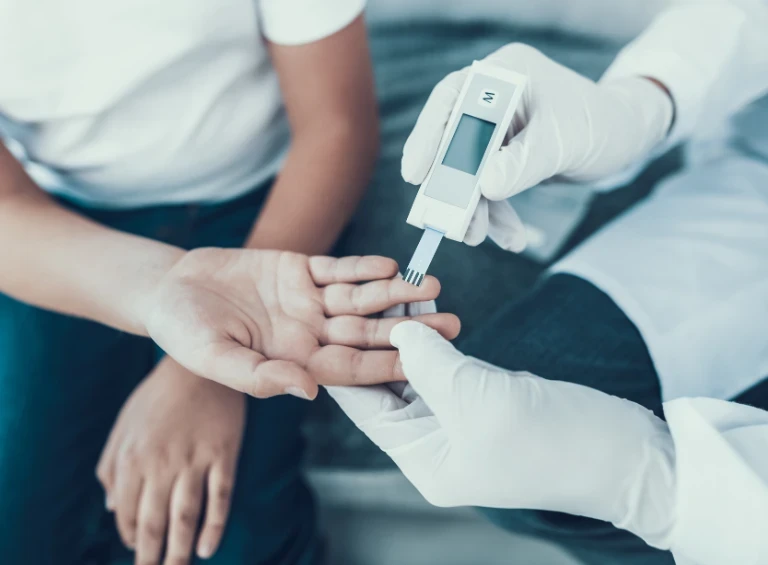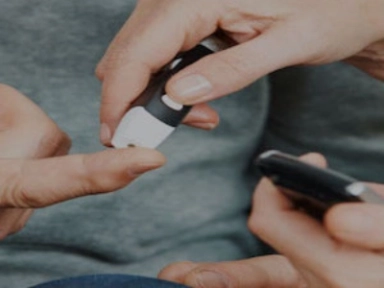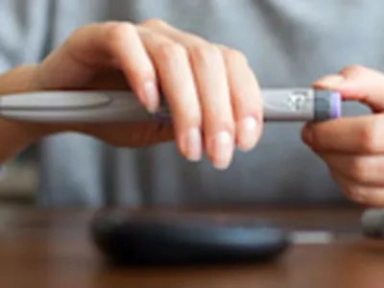New technologies in Type 2 Diabetes management and future opportunities to improve clinical outcomes
This session emphasizes that new technology in Diabetes management not only can overcome common barriers in achieving glycemic control in people with T2D but also may facilitate more effective and efficient Diabetes care.

Key takeaway
- Many people with T2D do not achieve their glycemic targets because of common barriers that prevent initiation and/or optimization of insulin.
- Technology can help overcome these barriers, thereby helping people to achieve glycemic target and reduce HCP visit/burden.
- More effective and efficient diabetes care may be facilitated by the integration of features needed to improve diabetes management.
- The push to digital health because of the COVID19- pandemic may provide further insight into benefits/remaining barriers for using new technologies in T2D.
Why this matters
- Many people with T2D need insulin treatment to achieve glycemic control and reduce the risk of complications.
- However, insulin treatment initiation is often delayed, and HbA1c targets are frequently not achieved in insulin-treated people.
- This study aimed to highlight current challenges in managing insulin treatment and how new technologies may address these barriers in the management of T2D.
Study design
- A focused literature review was conducted using PubMed and the congress materials (ATTD 2020, ADA 2019, and IDF 2019).
- During literature search, the term “diabetes” was combined with insulin titration, insulin and digital, smart phone, digital health technology, smart pen, connected pen, and connected device.
- Key inclusion criteria: Glucose monitoring application/connected glucose monitor, insulin titration application, insulin smart (connected pen), decision support software/algorithm.
- Exclusion criteria: T1D, CGM only, pump only, closed-loop systems, nutrition and/or physical activity application.
Key results
A number of publications reported technology-based interventions, including software tools, for use with mobile phones, smartphones, and computers or devices to overcome barriers to effective treatment.
Literature analysis suggested that these tools may provide equivalent or improved glycemic outcomes compared with standard of care.
Software tools demonstrating improved glycemic outcomes:
-
Diabeo-BI: Provided higher achievement of HbA1c versus standard care
-
Health2Sync: Provides several diabetes and self-management functions, including blood glucose logging, which can be shared with a CDE and a chat function allowing direct communication between the user and CDE.
-
This application provided similar glycemic outcomes with standard of care and less contact time with CDE.
-
Single-arm studies with tools like “My Dose Coach*” and “mySugr” demonstrated improved glycemic outcomes from baseline.
-
mySugr application includes diabetes educator-led coaching and is associated with increased frequency of blood glucose monitoring.
Use of software tools was associated with reduction in HCP-patient contact:
-
E.g., MITI tool was associated with faster time to reach optimal insulin dose with a similar number of hypoglycemia events versus standard of care and increased treatment satisfaction.
-
Other software tools with similar functionality: LTHome, Health2Sync, and MDMS
Platforms for integration of data from devices for use by HCPs and insulin use:
-
Glooko: Application that functions as a digital logbook; can synchronize with BGM/CGM; and can capture data on blood glucose, food intake, exercise, and medication
-
These data can be viewed by an HCP, and the application can provide a graphical display of these data to users compared with data provided by people in HCP offices as part of a standard of care.
-
Glooko was associated with lower mean blood glucose levels, with fewer hypoglycemic events and increased frequency of BGM.
Devices were identified to aid T2D management:
-
InsulClock: This device can track date, time of day, dose, type of insulin, temperature, and duration of injection.
-
Compared with standard care, InsulClock can detect 7 types of insulin pens and has detected dose, injection duration, and temperature accurately.
-
“Electronic pillbox” is a telehealth program integrated with remote home monitoring device for SMBG, blood pressure, and HCP involvement.
-
d-Nav device measures BG and BG patterns. Compared with standard care, d-Nav has superior glycemic control, has similar hypoglycemic risk, and saves costs.
Technologies that provide improved data capture may help identify people at risk of complications from T2D and those who could benefit from diabetes management tool support and personalized health care.
Future developments – Integrated platforms:
-
Integrated data may help improve glycemic outcomes and reduce treatment burden
-
Adoption of connected smart pens to improve TIR and adherence
-
Currently, no pen provides recommendation for titration without the use of a separate application
Key features to consider while integrating into a platform for diabetes management may include aspects like:
-
Knowledge: HCP to educate user on advantage of new and existence of new technologies
-
Professional support: Automatic transfer of data, allowing HCPs to monitor people and inform treatment decisions, as well as provision of direct contact with HCP when required
-
Insight: To provide motivational text and reminders, display progress and provide frequent reports to user, provide required frequency of system use responsive to target achievement
*My Dose Coach is not intended to replace the care or advice of a healthcare team
My Dose Coach is approved in Saudi Arabia under authorization number: GHTF-2020-2084
My Dose Coach is approved by health authorities in Kuwait, license number: 601020 Oct 2020 & Renewal Sep 2021
This material is intended for educational purposes only. Not all health technologies might be available for use in the relevant country.
- Edelman S, Kerr D, Khunti K, Vespasiani G. New technologies in type 2 diabetes (T2D) management and future opportunities to improve clinical outcomes. Presented at Advanced Technologies & Treatments for Diabetes (ATTD) conference on 05th June 2021.
ADA, American Diabetes Association; ATTD, Advanced Technologies & Treatments for Diabetes; BGM, blood glucose monitoring; CDE, credentialed diabetes educator; CGM, continuous glucose monitoring; HbA1c, glycated hemoglobin; HCP, healthcare professional; IDF, International Diabetes Federation; MDMS; Mobile Diabetes Management System; MITI, Mobile Insulin Titration Intervention; SMBG, self-monitoring of blood glucose; T1D, type 1 diabetes; T2D, type 2 diabetes; .TIR, time in range


